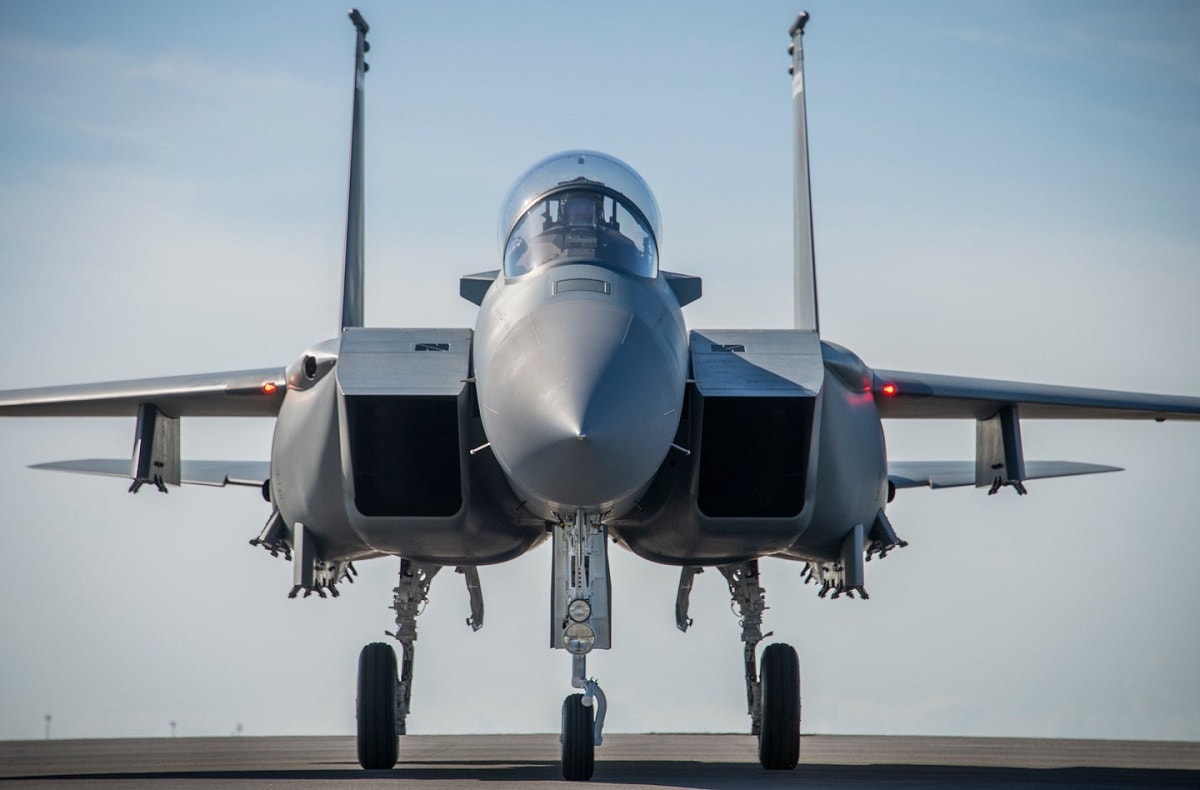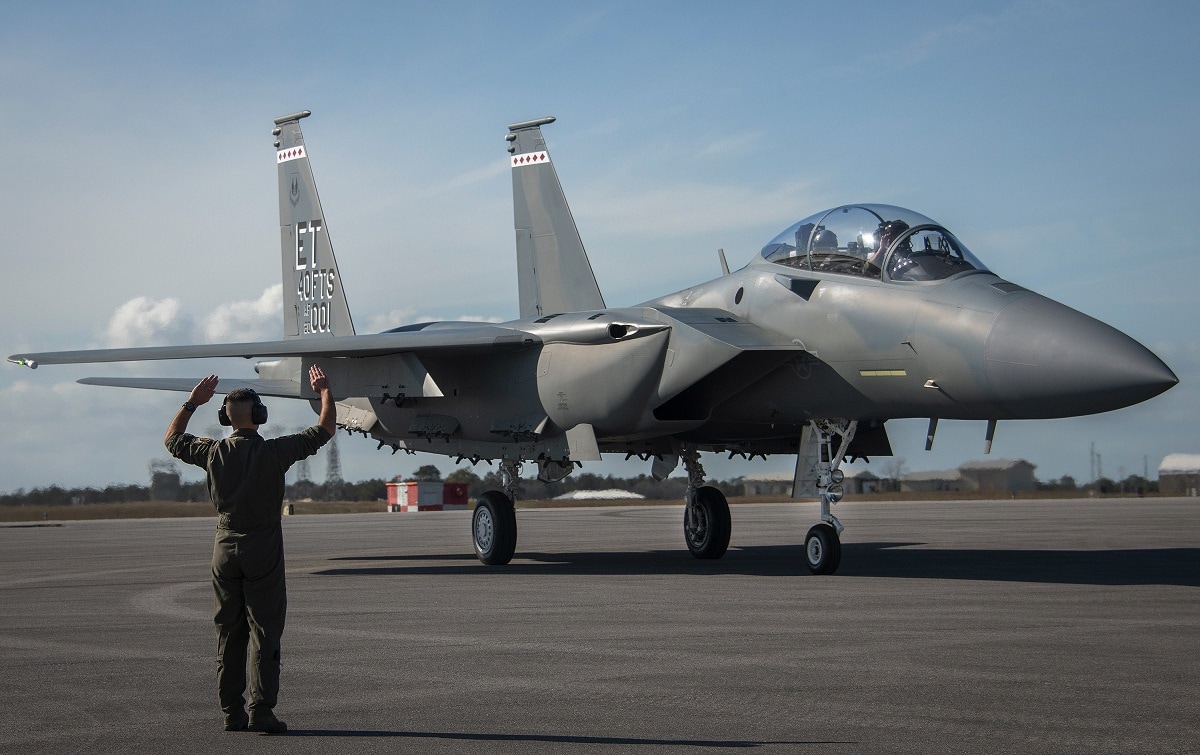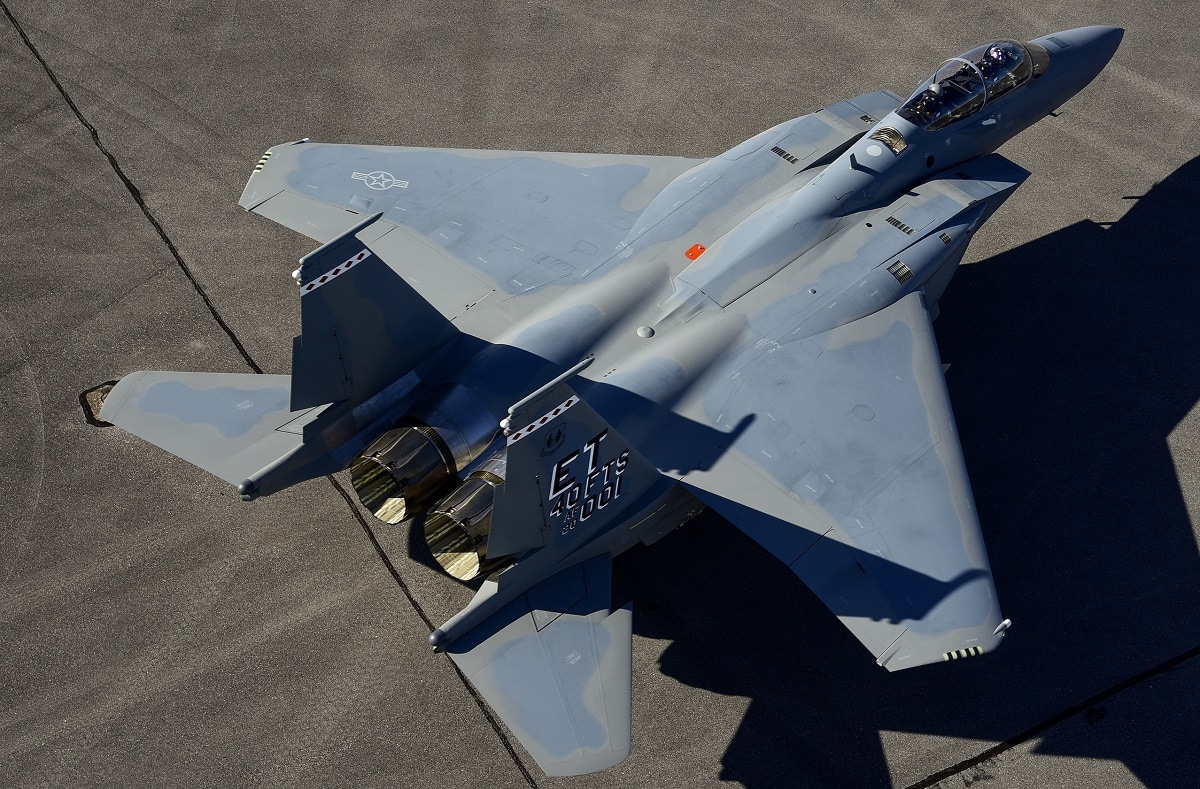The Air Force’s newest old fighter jet just completed its first-ever operational mission with other aircraft.
An F-15EX Eagle II underwent a two-week operational mission testing alongside older versions of the aircraft.
The F-15EX is a 4.5 generation fighter jet that seeks to bridge the gap between the U.S. Air Force’s 5th generation stealth fighters (F-22 Raptor and F-35 Lighting Strike II) and the rest of the 4th generation fleet (F-16 Fighting Falcons and F-15 Strike Eagle).
F-15EX, Explained
The EX model has several upgrades compared to the older F-15 models. For example, it contains a digital flight control system, allowing a computer to control the plane instead of the pilot, which was the case with the fly-by-wire systems of the older F-15 models. Another upgrade is the Eagle Passive Active Warning Survivability System (EPAWS), an electronic attack/protect system designed to allow an older, non-stealth aircraft to operate in Anti-Access, Area Denial environments like the ones China is building in the South China Sea and Russia in Crimea.
It has been an interesting, if not hectic, time for the F-15EX community.
The first-ever aircraft flew only last February, while the Air Force received its first two aircraft in March and April; these two F-15EXs are the only ones in existence.
“Oftentimes, we go out there as pilots, and we think that the airplane works as well as it should, but behind the scenes, we dig into some of the instrumentation, and it wasn’t exactly what we remembered,” he said. “Every so often, we need the instrumentation folks to help us out with what was really going on,” Lt. Col. Kenneth Juhl, Air Force Operational Test and Evaluation Center F-15 tester, said.
The F-15 Platform: Old, But Still Relevant
As an aircraft, the F-15 platform is extremely robust and effective with an astounding kill ratio of 104-0—the Israeli Air Force, which also operates the platform—has been responsible for most of the kills. Although a bit old—the U.S. Air Force received its first F-15 48 years ago—the aircraft is still a formidable foe, and that is partly the reason why the Air Force is starting to buy it again after almost 20 years.
The F-15EX has already gone through rigorous testing and even participated in the massive force-on-force Northern Edge exercise in May.
“The main focus here is to provide the initial push for operational tests and evaluation to really evaluate the platform from an end-to-end perspective with the addition of a robust threat environment that we have here at Nellis. That way, when we write our initial test reports, we’re giving an accurate look to the combat Air Force and the [Air National] Guard as to what the platform is capable of when it initially fields,” Colton Myers, Operational Flight Program Combined Test Force F-15EX test project manager, said in an Air Force press release.


The F-15EX, the Air Force’s newest fighter aircraft, arrives to Eglin Air Force Base, Florida March 11. The aircraft will be the first Air Force aircraft to be tested and fielded from beginning to end through combined developmental and operational tests. The 40th Flight Test Squadron and the 85th Test and Evaluation Squadron personnel are responsible for testing the aircraft. (U.S. Air Force photo/Samuel King Jr.)

The F-15EX, the Air Force’s newest fighter aircraft, arrives to Eglin Air Force Base, Florida March 11. The aircraft will be the first Air Force aircraft to be tested and fielded from beginning to end through combined developmental and operational tests. The 40th Flight Test Squadron and the 85th Test and Evaluation Squadron personnel are responsible for testing the aircraft. (U.S. Air Force photo/1st Lt. Karissa Rodriguez)
In an attempt to streamline its fighter fleet, the Air Force is pursuing the “four-plus-one” concept for the future. The goal is to have the F-35, F-15EX, F-16, A-10 Thunderbolt II, plus the Next Generation Air Dominance (NGAD) aircraft, a 6th generation plane still under development.





